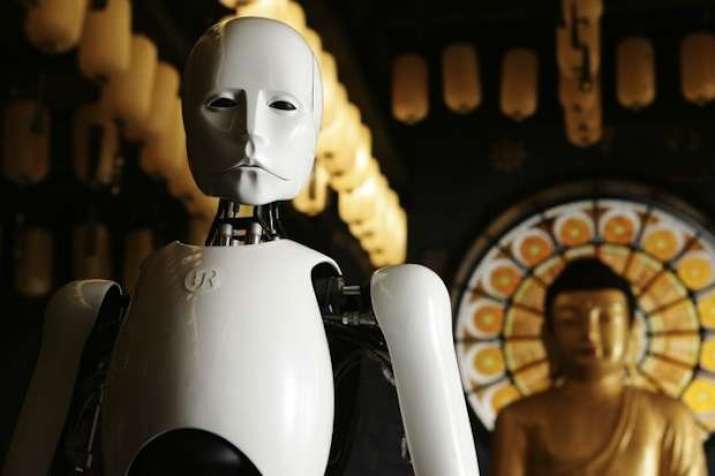
Artificial Intelligence, or AI, is a broad term used to define a wide range of advanced technologies and techniques aimed at creating intelligent and autonomous systems capable of reasoning, decision-making, and executing functions with limited, or without, human input and supervision.
There are many technical innovations, such as novel algorithms and programming techniques, to enable such capacities, potentially representing a new evolutionary step for humanity toward “higher cognition.”
On the one hand, intelligent technologies can contribute to progress and can help to overcome human limitations, for instance by exponentially increasing our computational abilities—the ability to analyze and process vast amount of data with great precision—and enhance human cognition in many ways. We should, however, be aware that these intelligent technologies come with a new range of errors and risks that could potentially become a threat.
Recently, international communities, both technical and non technical, and both academic and civil, have been intensifying efforts to raise awareness of the risks that may arise from widespread AI technologies controling our systems. Yet, unless the human consciousness evolves alongside the new technical abilities, these efforts may not be sufficient to avert the risks.
Very interesting novel computer interaction protocols, which I broadly call “mind technologies,” aimed at enabling communication between human users and computers—not via keyboards or touch screens, but via inputs and commands given directly by the brain, are now being researched.
These novel interactions generally fall into two groups, either external EEG (electroencephalography) interfaces, where electrodes positioned on the head “read” certain types of brain activity, which is then translated into executable commands by software that interprets mental activity, or internal sensors that are implanted directed into the cortex.
Startup companies such as Neuralink have reportedly started researching technology in which electrodes implanted in the brain could be used to cure brain pathologies and, rather ambitiously, merge computers with brains so that humans could one day engage in “consensual telepathy.”
Elon Musk, founder of Neuralink, explains this possibility as follows: “There are a bunch of concepts in your head that then your brain has to try to compress into this incredibly low data rate called speech or typing. That’s what language is, your brain has executed a compression algorithm on thought, on concept transfer. If you have two brain interfaces, you could actually do an uncompressed direct conceptual communication with another person.” (Reuters)
But what would prevent the opposite from happening: that a super intelligent, evolving machine with high control capabilities uses the electrodes to disable all critical thinking abilities in the minds of humans?
In addition to this field of research, there is increased scientific interest in telepathy,* and encouraging scientific research findings on telepathy have been published by the research institute Starlab, French firm Axilum Robotics, and Harvard Medical School.
The main motivation and justification for experiments with various types of brainwave reading via EEG is that research in this field may one day provide a new communication pathway for patients who might not be able to speak.**
The justification for such research is that, in addition to medical benefits, brain-to-brain communication could find applications in the gaming and military domain. “Soldiers, for instance, could use the technology on the battlefield, sending commands and warnings to one another. Civilians might benefit as well; businesspeople could use it to send cues to partners during negotiations, or pitchers and catchers could avoid sign-stealing during baseball games.” (Smithsonian Magazine)
While technological progress is important, such mundane aspirations may be contradicting with the underlying principles of mind development. Excited at the prospect of scientific advances, researchers seem to ignore that enhanced cognition comes with enhanced responsibility, maturity, and responsible decision-making abilities.
New research frontiers can be hotbeds of (open-ended) questions. From a technical viewpoint, computer-based (coded) communication relies on explicit knowledge representation, formal languages, gestures, signs. When communication takes place directly, mostly from brain to brain but also from brain to computer, the knowledge is often not codified according to defined technical standards, but implicit and tacit. In an attempt to study and understand further aspects of how mind and consciousness support implicit and tacit knowledge and communication, science looks toward the world’s “wisdom traditions.”
Although not historically acknowledged by modern science and until now considered somewhat “a myth,” phenomena like mind-to-mind communication are well documented in certain Eastern schools of thought, among yogis and meditation practitioners.
If anything, scientific research into these claims, which are plentiful in the world’s wisdom traditions, is important to prove that they may not be unfounded after all.
Yogic systems and wisdom traditions are traditionally considered closer to philosophy and religion than to modern science, but they are finding their way in modern theories of cognition. The ancient Indian thought system Samkhya-Yoga, for example, has been an object of contemporary research aimed at bridging Western modern thought with ancient wisdom. This research is analyzing independently gathered empirical evidence and is leading to the conclusion that more comprehensive theories may be required to explain the breadth and depth of cognitive dynamics before we can even begin to grasp the complexity of consciousness in the context of reality and nature.
In the yogic and tantric Buddhist traditions, there are various references to mind transmissions in which two practitioners who are synced up to similar experiences can become synthonized (in tune with the same frequency).*** In these ancient systems, cognition is not isolated from other aspects of human experience and behavior as it is in mainstream Western psychology.
Examples of extraordinary cognition are knowledge of the past and future, clairvoyance, clairaudience, psychokinesis, and telepathy, which are generally the result of mind training and strict practices aimed at developing and strengthening control over one’s faculties and a deeper levels of consciousness. What modern technological advances need to consider is that the aim of obtaining extraordinary cognitions in these wisdom traditions is not killing, or winning wars or competitive games. In fact, it is the opposite: these extraordinary cognitions are, if at all real and possible, the outcome of mental refinement, of the development of compassion to reach liberation and enlightenment, and the attainment of pure consciousness and extinguishing one’s karma.
One of the important practices taught by the Buddha to control the mind and ensure it does not go astray, described in the Dhammapada, is to “avoid all forms of destructive actions, engage in actions which are positive and beneficial, and tame your mind, and this, in essence, is my way.”
In developing powerful technologies capable not only of autonomous intelligent behavior, but also of communicating directly with the brain and human consciousness, system developers should familiarize themselves with the yogic and Buddhist traditions where such capabilities are/were obtained as the result of mind training and related practices. Even more important is to understand that the purpose for advancing technology is not winning on the battlefield or in a sports game, but to gain enlightenment and liberation from suffering for all sentient beings, that is to develop spiritual awareness and altruism. Higher cognition without bodhicitta will always carry implicit and inherent unavoidable risks.
* See: Scientists Prove That Telepathic Communication Is Within Reach (Smithsonian Magazine)
** See for instance: A New Study Brings Scientists One Step Closer To Mind Reading (Smithsonian Magazine)
*** For an explanation of this process: How Do Theories of Cognition and Consciousness in Ancient Indian Thought Systems Relate to Current Western Theorizing and Research?
See more
Elon Musk on mission to link human brains with computers in four years: report (Reuters)
Scientists Prove That Telepathic Communication Is Within Reach (Smithsonian Magazine)












